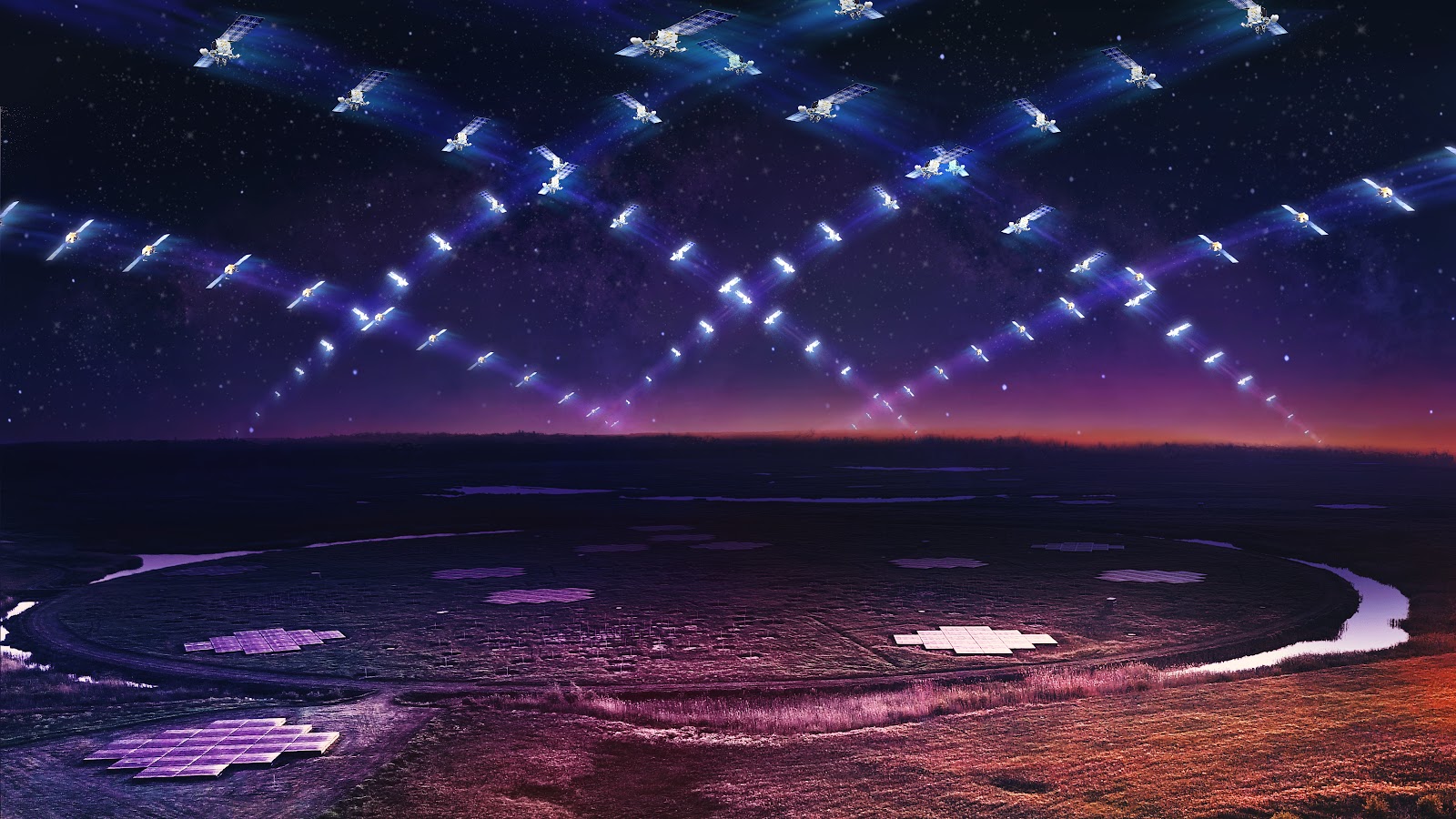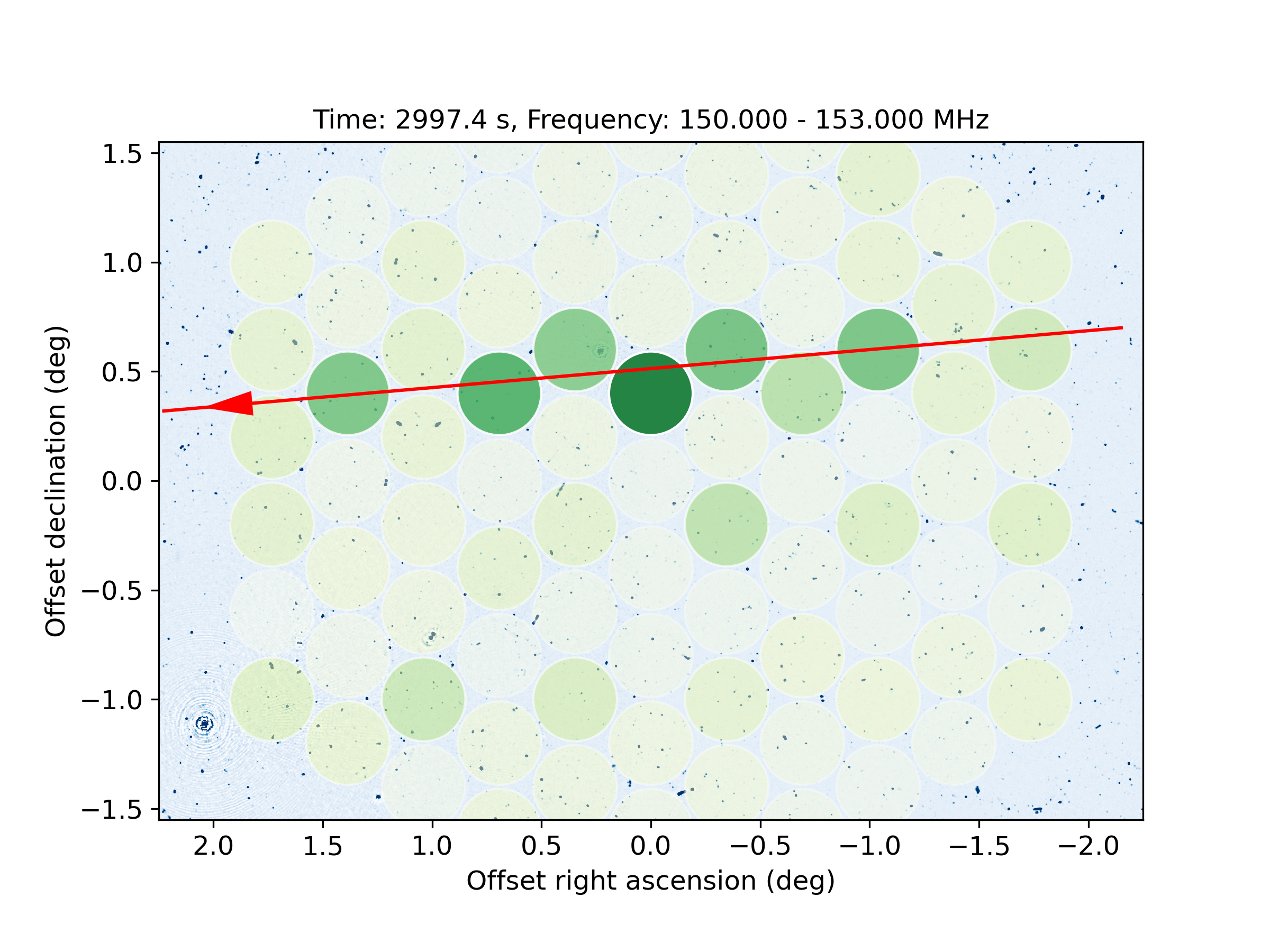
Caption top figure: Artist impression of a large satellite constellation in low-Earth orbit circling above the LOFAR telescope. (Credit: Danielle Futselaar)
Members of the Opticon RadioNet Pilot (ORP) used the Low Frequency Array (LOFAR) telescope to observe Starlink satellites. They detected "unintended electromagnetic radiation" from onboard electronics, which could negatively impact astronomical research. They encourage satellite operators and regulators to consider this impact on radio astronomy in spacecraft development and regulatory processes.
For a study to be published in the Astronomy & Astrophysics journal, scientists from a number of leading research institutions, all members of the Opticon-RadioNet Pilot, detected 47 satellites to emit so-called "unintended electromagnetic radiation". Unintended electromagnetic radiation emanates from the electronics of the satellites, not necessarily linked to the transmission system. This is a concern to astronomers, since even faintest signals have the potential to change astronomical observations or even outshine cosmic sources. The observed frequency range includes a protected band between 150.05 and 153 MHz specifically allocated to radio astronomy. Nevertheless, SpaceX is not violating any rules. On Earth electronic devices have to follow international standards limiting unintended electromagnetic radiation, which in space only exist for the transmitting parts of the satellites. The authors are in close contact with SpaceX, and the company has offered to continue to discuss ways to mitigate any adverse effects to astronomy. The authors hope that other satellite operators follow SpaceX’s example. Collaboration with the space industry and regulators is crucial to prevent the consequences of this unintended effect on astronomical observations.
The original press release by the International Astronomical Union’s Centre for the Protection of the Dark and Quiet Sky from Satellite Constellation Interference (IAU CPS) can be found here.
Opticon RadioNet Pilot itself organises the ORP Sky Protection Group to work with partner organisations towards the general protection of astronomy from the impacts of light- and radio pollution. Membership is open to dedicated professional and amateur astronomers.
